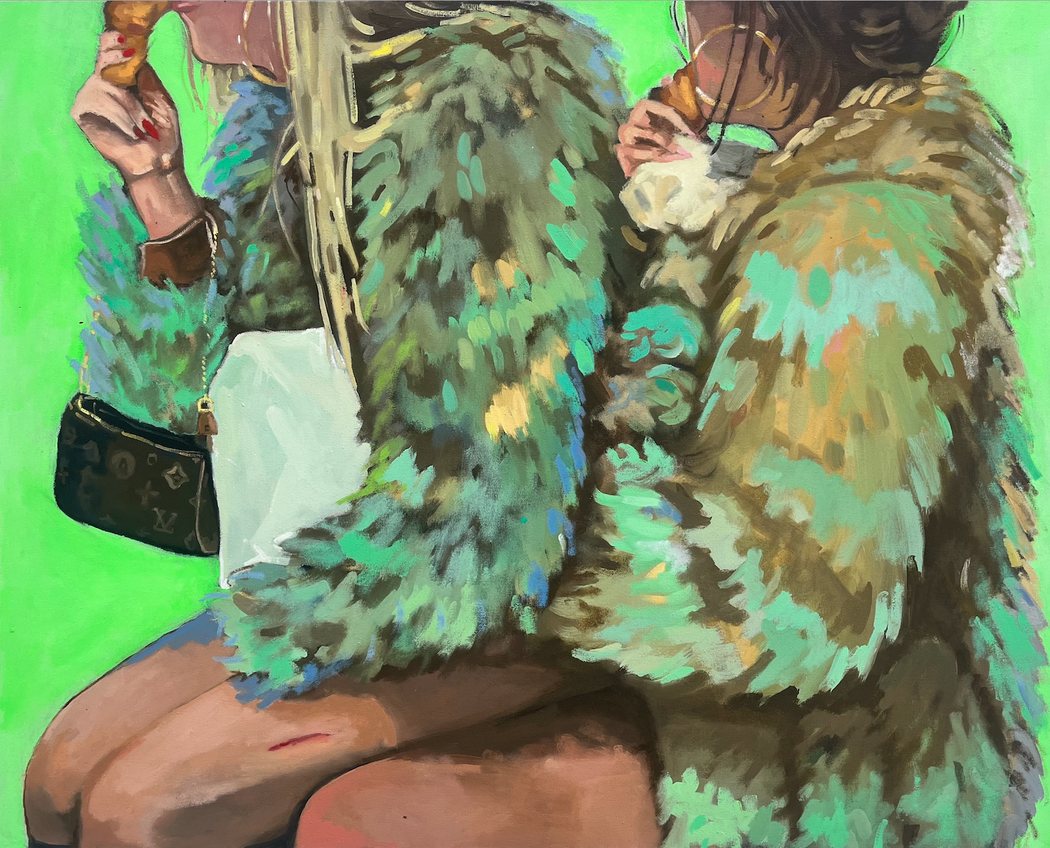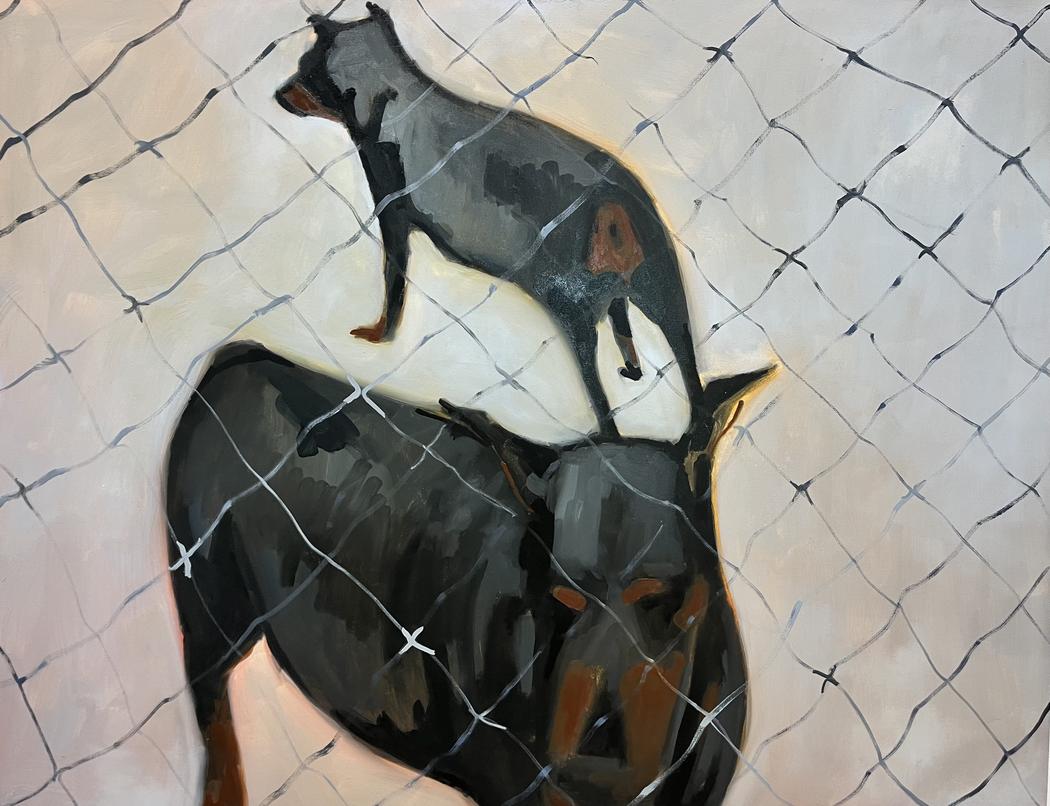Marnie González Warren
Where do you live: Based in Manchester, UK
Your education: Currently completing an MFA in Fine Art from Manchester School of Art, with a recent completion of a BA in Fine Art & Art History, also from Manchester School of Art.
Describe your art in three words: genuine, playful, ambiguous
Your discipline: Oil painting
Website | Instagram
 Marnie González Warren | Fur Coats
Marnie González Warren | Fur Coats
What initially drew you to oil painting as your main medium, especially in the age of digital art?
My interest in oil painting lies not only in its visual qualities and processes, but also in its intimate, slow, and laborious nature. It contrasts the immediacy of visual culture by demanding time and effort and allowing me to create a space where time and the media scroll consumption is slowed, cementing memory whilst encouraging its reflection. Not to mention its eternal quality as a worshipful and time-consuming practice. To me, this commitment is almost an act of resistance: in its slowness and physicality, oil painting pushes back against the acceleration of digital culture and insists on a different kind of looking and meaning-making.
Your works often involve vibrant colors and layered compositions. How do you approach building these visual tensions?
Colour plays a central role in my practice. I begin paintings with fluorescent or very bright underpaintings, which hum beneath the surface and bleed through the layers. This creates an inner tension, a vibration, which shifts temperature and mirrors the saturation of media culture as they linger under the picture. On top of this base, I build layers to create harmony. The tension comes from what is revealed and what is withheld.
How do theories from Sontag, Barthes, or Debord directly influence your artistic decisions?
Because of my formation in art history, all the reading I do inevitably bleeds into my work. I’m informed by what I see, consume, and experience. Debord’s Society of Spectacle (1967) has stuck with me since I first read it during my BA. His examination of the all consuming pervasiveness of image in contemporary society and the idea that in modernity everything has become image has only become more relevant today. His connection between image, spectacle, and capital is central to what I’m exploring in painting: re-appropriating digital images, translating them into paint, and interrogating the role of the painter as image-maker.
Meanwhile, Barthes’ ideas on authorship, myth and meaning-making are important references in framing and reframing my work. And Sontag, particularly in her discussions of the tensions between photography, memory, and consumption, has shaped how I think about power dynamics and manipulation in visual culture. Her attitude has encouraged me to question how images function and the implicit systems.
 Marnie González Warren | Dogs
Marnie González Warren | Dogs
What role does memory play in your paintings, and how do you convey its instability or fluidity?
Memory is always a fundamental factor. In my work it is presented as fragmented, and reconstructed. I source the imagery from a personal archive and then reconstruct them, cropping and manipulating the reference to build a new narrative tension. I use memory as a tool in a way, as it becomes entangled with meaning-making and tied with that of culture, nostalgia, place, and in conversation with a social history. In a way, my paintings construct a time-line and a journal of my lived experience, so memory is inextricable, although played with and recontextualised.
Many of your paintings depict female figures within consumerist contexts. How do you balance critique with celebration?
As Barthes reminds us, artists often end up complicit with the very systems they critique. For me it is a reflection of my experience that marries together all of the emotions and contradictions in my own mind, where these frustrations coexist. They mold each other and are inseparable to me. I celebrate people, objects, and culture, but I also interrogate the structures and contexts that shape them. Nothing exists in a vacuum: all images and practices are formed by sociopolitical and cultural systems that have constructed them and thus our attitudes and experiences embrace much contradiction.
How does your Spanish influence, especially from Spanish Impressionists, shape your color palette and technique?
There’s a raw honesty in Spanish painting that really stands out and is important to me. The attitude that it exudes and the rich, painterly, colour palette that so accurately captures atmosphere. From Goya to Sorolla and the important and rich contemporary scene in Spain now are all inspiring. I see myself in that tradition of drawing from heritage to embrace both cultural history and contemporary experience.
What emotion or reaction do you hope viewers experience when confronting your work?
I want the viewer to become an active participant, complicit in the work. The tensions exist not only within the image itself but also in the exchange between painting and viewer, who become active participants in meaning-making.
My work is playful, seductive, and humorous, but it also leaves space for contradiction. I want people to relate to the work and resonate with it, drawn in by colour and surface, yet encouraged to reflect on what they’re engaging with: the aesthetic façade of Western culture and the systems that shape how we look at images. The work holds space for ambiguity, contradiction, and desire and I hope that tension lingers after they’ve moved away.

Leave a Reply